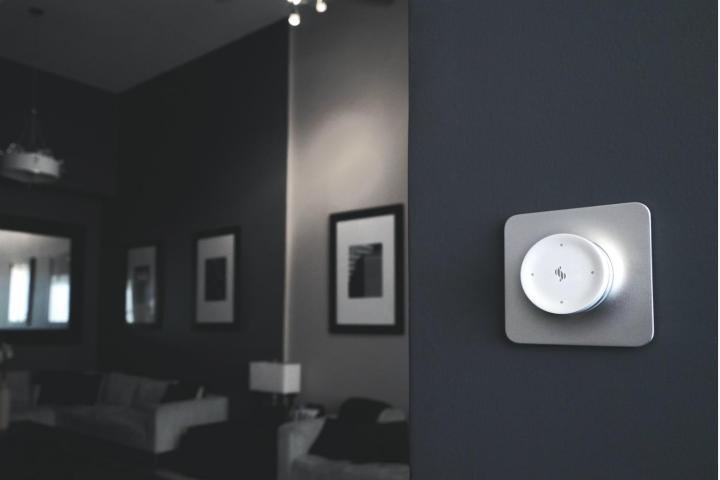
Seed Labs recently announced the development of the Silvair Control, a device that looks more like a mouse than a powerful smart home tool. With Bluetooth capabilities, the product can communicate with a smartphone or tablet to control Silvair-enabled home devices, such as lamps and blinds.
The button-like item does not require any wires or even a plug for power; the Silvair Control has a lithium coin battery that lasts up to eight years. Users tap or twist the button to turn on the lights or lower the blinds, depending on what device they have the control assigned to.
In terms of its design, the Silvair Control is sleek, white, and round. It’s small, so you can carry it with one hand and has a magnetic mount that lets users affix it to a metal surface if they don’t want to tote it around the house.

Silvair Control is a part of Seed Labs’ Silvair Mesh, where software-defined sensors connect household appliances for seamless control. The “mouse for your house” is just one part of the company’s venture into the Internet of Things.
“Initially, Seed’s Silvair line of products are supporting manufacturers in the lighting, blinds, shades, locks, and garage doors categories, which have huge potential, but they will be adding additional products in the electronics and appliances space in the months to come,” according to a company spokesperson.
Editors' Recommendations
- What to know before connecting the Roborock S8 MaxV Ultra to your drainage system
- What to do if your Amazon Alexa app is not working
- Home Depot’s Hubspace is a great way to start building your smart home
- Echo Hub vs. Echo Show 8: Which is the best option for your smart home?
- How to turn your old phone into a security camera


